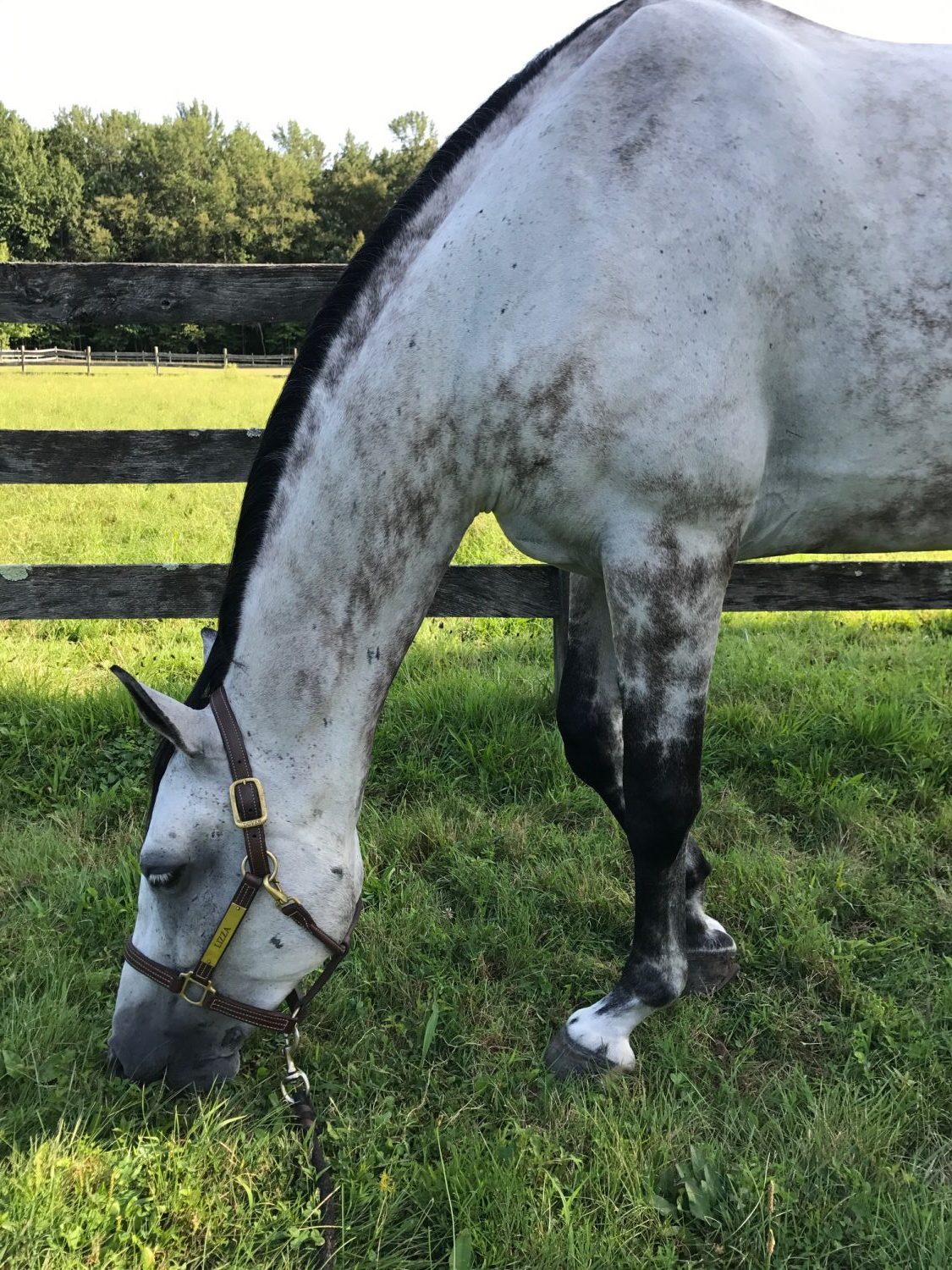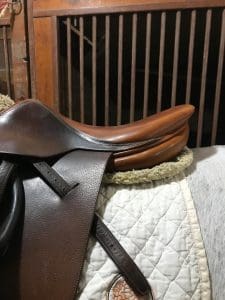Spring Horse Grooming & Care Tips

Ahh, spring. The birds are starting to chirp in the morning, the sun is shining (and staying out later), and the grass is starting to poke through the ground. I love spring for reasons other than sunshine and flowers though. Mainly because I love having everything super organized and clean. Here’s some tips and trick for a spring cleaning overhaul.
Rub a Dub Dub
Now that it is finally warm enough, it is time to give your horse a deep cleansing bath. There is a common trend of using gentle dish soap to bathe horses. No, no, and no again. Dish soap strips your horse’s coat of its natural oil, making the coat incredibly dry and taking away it’s natural shine.
Use the SQUEAKY GREEN & CLEAN Shampoo to bathe your horse. Be sure the scrub the mane, forelock, and tail extra well. These are areas the horses accumulate the most dirt and grime, rolling in turnout outside. You can follow up with the SILKY Rinse Out Moisturizing Conditioner for Coat, Mane & Tail. Don’t worry about the conditioner making the mane to slick to braid; it rinses out well.
Speaking of Baths…
Most top show barns won’t give their horses soapy baths more than a 1-2 times a week. If your horse is sweaty, you can rinse him well with plain water or do a white vinegar rinse. Take 1 part white vinegar to 2 parts water and sponge it onto your horse. May particular attention to the areas where the horse sweats: underneath the saddle, the

girth area, in between the hind legs, and where the bridle sits. Then rinse thoroughly. The vinegar acts as a mild detergent and is great for the horse’s coat without using soap.
The post-bath graze is always the best! Look at those EcoLicious dapples!
Shedding Season
My horse has already started shedding our her winter coat a ton. Be sure to spend extra time currying before and after you ride to get rid of dirt and bring those dapples through! I use a metal curry comb all year on my horse as I feel it is much more effective than the rubber curry combs, it lasts forever, and doesn’t hold the grime as much. Be careful with a metal curry comb on sensitive skinned horses. Start light and you can gradually increase pressure. A lot of horses I have groomed over the years prefer the metal curry comb. When they start leaning into you, you know you’re “hitting the spot.” If you horse has a super thick coat, you can use a shedding blade.
Speaking of grooming…
Be sure to clean your grooming supplies! This is a huge aspect of horse care that gets over looked and is dangerous if and when there is a horse in the barn that has some sort of fungus on their coat. Brushes, curry combs, etc should get cleaned every 1-2 months (depending on how many horses you have) to not only get rid of bacteria, but make the brushes work better and last longer.
This is the only time I will say it’s ok to use gentle dish soap. I like to rinse my brushes out, fill a large bucket of warm/hot water with some gentle soap and let the brushes sit in the soap water for about 15-20 minutes. I then use my metal curry comb to agitate the brushes and get deep into the roots where grime collects. I then rinse them out and stand them bristles facing down on a towel in the sun. A common mistake is to let the brushes dry bristle side up. While it may dry the brushes faster, this will eventually ruin the wood backing as the water from the bristles drips down. If you have synthetic brushes, you won’t have to worry about this.
Tackle your tack trunk
Now is the perfect time to see what you do and don’t need in your tack trunk. While this seems like daunting task, it can be a fun activity with some light snacks and beverage with friends. Remove everything from your trunk, vacuum out the dust and debris, and take a rag with Murphy Clean & Shine Orange Oil Spray to clean the inside of your trunk. This will not only clean and prevent dust, but make your trunk smell amazing!
Sort through your tack, wraps, that old jar of you-don’t-know-what-it-is-anymore cream and decide what can be thrown out, repaired, recycled, or kept. Be sure to send tack out for repairs before show season hits. You do not want to be stuck with loose stitching on your bridle! Clean any moldy tack with regular water and a nice glop of white vinegar or ammonia mixed in. This will help strip the tack of the mold. Follow up with some conditioner to keep leather buttery soft.
Make sure your tack fits properly. I often see saddle pads that are too short for the half pad and saddle. This is a huge pet peeve of mine! Not only does it look sloppy, but the pressure from the rider, saddle and half pad sitting on the seam of the saddle pad directly on the horse’s back is a recipe for disaster. I have seen horses with massive welt on their backs because of this. Make sure to buy pads that properly fit your saddle and when you can, hang them to dry instead of throwing them in the dryer. If your pad slips, use a non-slip pad. I like to use the blue Gel-Eze Under Bandage leg wraps as a non-slip pad.|
Here you can see the difference between these two saddle pads. On the left ,the saddle is sitting on the seam of the saddle pad, creating pressure directly on the horse’s back. On the right, the saddle pad extends past the saddle and half pad properly.


Keep creams and gels in a zip lock bag so they do not spill. Trust me, you do not want to learn this the hard way…
Sidenote…
My dad and I actually built my tack trunk from scratch almost 10 years ago. It is incredibly spacious, was a fraction of the cost of other wood trunks, simple to build, has a lip underneath (so you do not need blocks for it at shows), and has held up beautifully. If you go this route, be sure to add good hinges and nice brass fixings; they are worth it in the long run. You can find the plans we used for the Basic Tack Trunk and some pictures here: www.elitetackdesign.com/index.html
Send Blankets Out
Send your winter blankets out for wash, repairs, and re-waterproofing. Make sure they are neatly packed away and labeled so you know which blanket is your medium stable blanket and which is your medium turnout blanket. I like to store mine in the bags they came in because I know they will a) fit back in the back and b) I feel good reusing the same bag. Store in a cool, dry place.
Don’t Forget the Barn, Feed Room and your Trailer!
Take time to dust through your barn. This helps tidy up appearances, but also helps get rid of dust and cobwebs which can be a fire hazard. Make sure your horses are not in their stalls when you do this. I also like to do a scrub of the walls and window frames with a Simple Green All-Purpose Cleaner and water mix. If you can, a power washer is great for this (and the horse trailer), but make sure your stalls have time to properly dry so you don’t create a moldy stall.
The feed room is the perfect place for old crumbs of grain and expired supplements to hide. Definitely take the time to move your feed bins out of the corners to sweep behind them. You can wash bins, buckets, and cans out with a diluted bleach solution and rinse well. Make sure everything is labeled clearly (buckets/supplements/etc) so the person making grain knows what your horse gets.
Make sure your horse trailer is in working order. Check that all the tires have enough air, the electric works, and your hitch, chains, etc are not completely rusted over. Use some WD-40 to clean rust off, but not too much to make the hitch slippery. If your trailer needs repairs, now is the time to send it out, before you are planning on horse showing.

Spring Vaccinations, Worming & Dental Work
Consult your veterinarian and barn manager about the best spring shot schedule for your horse depending on the climate your horse lives in. If your horse gets a bit unwell after his spring shots, space them out to minimize potential sensitivity. It is also good idea to not get your horse vaccinated on the same day when the dental work is performed if your horse has a bit of a hard time shaking the tranquilizer off. Here is a great article on vaccinations from Practical Horseman Magazine.
Worming is also important spring time when parasite shedding is high. Have your veterinarian conduct a fecal egg count before deworming to determine which wormer your horse needs as too much dewormer or the wrong dewormer can actually make the worm situation worse and create resistance. Here is a great article from Furlong & Associates on deworming.
Calendar Planning
Now is also a great time to start thinking about when and where you want to show. With my mare, I have taken it slow. First schooling off property at a different farm, then schooling during a horse show at a different farm, and now planning for her first show. In general, I try to pick shows that are a positive learning experience for my horse. Take things slow and do right by your horse. Some local organizations put together a calendar of shows in your area. This makes it easy to plan your month out ahead of time.
Bougie schooling off campus at a horse show. The 2018 NJPHA Calendar of Events.


Ride Green,
Kiira Liiza
EcoLicious Grooming Guru
About Kiira
Kiira M. Lizza, 26, grew up as a working student for Olympian Nona Garson in New Jersey, USA. She attended Skidmore College in Saratoga Springs, NY where she played polo and rode on the competitive IHSA team. After graduating with a degree in Management and Business, Kiira went on to work for equestrian luminaries Anne Kursinski, Amanda Steege, and Leslie Burr-Howard. Kiira is an amateur rider with a full-time job in NYC and spends evenings/weekends riding and focusing on becoming a better horsewoman with plans to ride professionally one day.
Share Post
